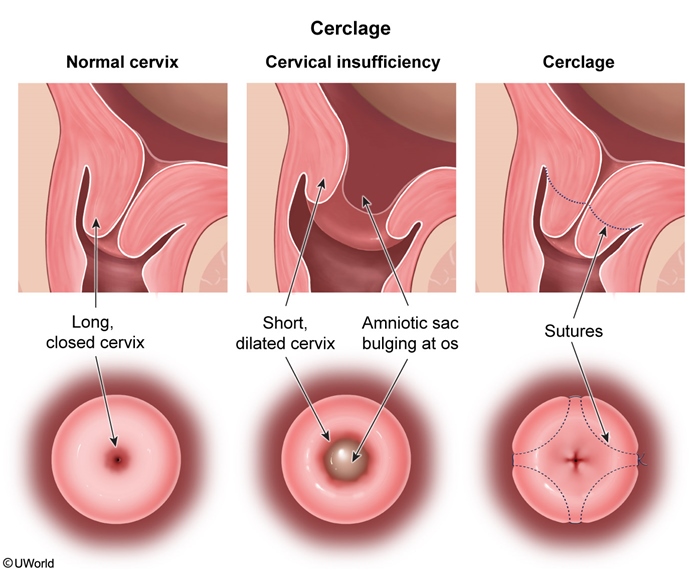Cervical Insufficiency
Article Sections
Introduction
Cervical insufficiency is a structural weakness of the cervix that predisposes to painless cervical dilation, which can lead to second-trimester pregnancy loss (<20 weeks gestation) or extremely preterm birth (<28 weeks gestation) in the absence of uterine contractions.
Pathogenesis and risk factors
Cervical insufficiency occurs due to structural weakness of the cervix such that the increasing weight and pressure of a developing pregnancy causes spontaneous cervical dilation. Most commonly, cervical insufficiency is caused by prior injury or trauma to the cervix, which compromises its structural integrity and decreases the cervical tensile strength. Therefore, the major risk factors include:
- Prior cervical excisional procedure (eg, cervical conization, loop electrosurgical excision procedure [LEEP]) for cervical intraepithelial neoplasia
- Prior obstetric trauma (eg, cervical laceration)
Patients with prior second-trimester pregnancy loss or extremely preterm birth are also at risk, particularly if the prior delivery was associated with spontaneous, painless cervical dilation. In rare cases, cervical insufficiency can be caused by inherent collagen disorders (eg, Ehlers-Danlos syndrome) or congenital uterine abnormalities (eg, septate or bicornuate uterus).
Continue Learning with UWorld
Get the full Cervical Insufficiency article plus rich visuals, real-world cases, and in-depth insights from medical experts, all available through the UWorld Medical Library.
Figures
